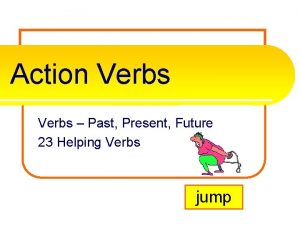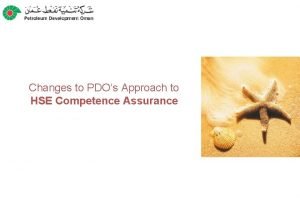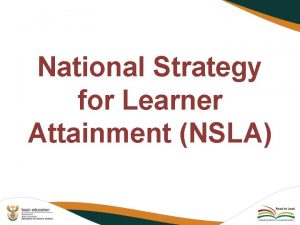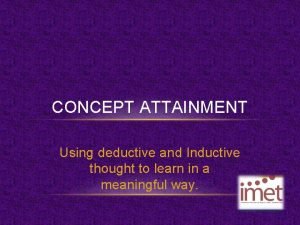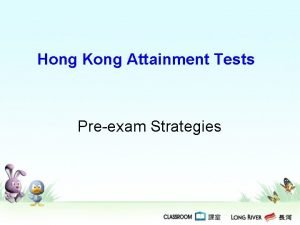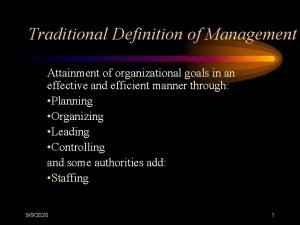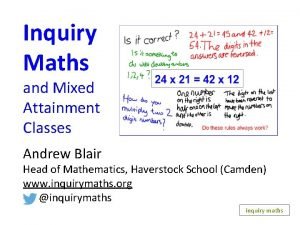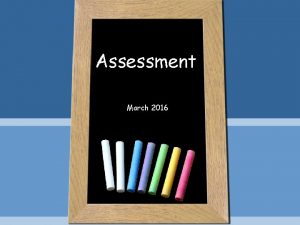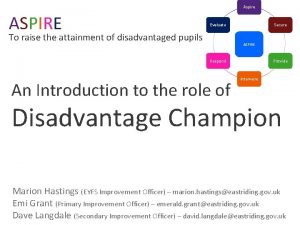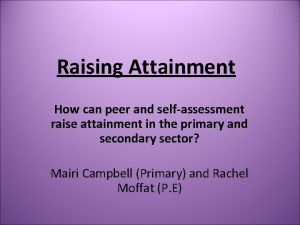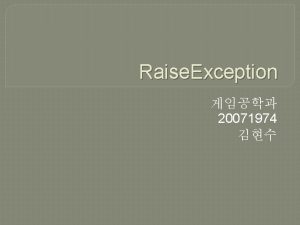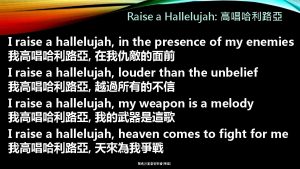Helping to Raise Attainment Engagement in Critical Activities





















- Slides: 21

Helping to Raise Attainment: Engagement in Critical Activities Active Learning and Differentiation

Active Learning The key to successful and valuable learning is confidence. Active Learning can help build confidence, high order thinking skills and draws on knowledge from other areas. The kids LOVE it!

Top 10 most expensive paintings ever sold • Do you recognise any? Match the facts. In groups put the paintings in order from: • Best to Worst – What did you find? Who is right? • Oldest to Newest – How did you problem solve this? What things affected your decision? • Most Expensive to Least Expensive – Could you do it? Is it worth it? Guess the price of the most expensive.


Top 10 Most Expensive Paintings Ever Sold 2015 10. Bal du Moulin de la Galette – Pierre-Auguste Renoir $141, 500, 000 9. Three Studies of Lucian Freud – Francis Bacon $144, 700, 00 8. Portrait of Dr Gachet – Vincent Van Gogh $149, 400, 00 7. La Reve – Pablo Picasso $157, 500, 000 6. Portrait of Adele Bloch Baur I – Gustav Klimt $158, 500, 000 5. Woman III - Willem de Kooning $161, 500, 000 4. No. 5, 1948 – Jackson Pollock $164, 400, 00 3. Women Of Algiers (Version 0) – Pablo Picasso $ 179, 400, 000 2. The Card Players – Paul Cezanne $263, 100, 000 1. Will You Marry Me – Paul Gauguin $ 300, 000

Newest - Oldest 1969 1948 1959 1954/5 1932

Newest to Oldest 1907 1894 1890 1948 1876 1892

Describing Activity This active learning task helps pupils to understand value the importance of accurate and descriptive language. One person will be given a photograph to describe and the other pupil draws what they hear. Using the learning mats as a tool throughout or as a corrective tool in peer assessment has helped children develop their language and vocabulary.

Learning Wall/ Learning Mats The philosophy: The learning mats break down each element of the art and design process into manageable chunks. There is a differentiated use of language; simple and complicated words are side by side in word banks and template sentence structures offer an aid to independent working. We use these from S 1 to increase confidence and pupils become familiar with the format by the time they reach certificate classes.

What it looks like

Design Side 1

Design Side 2

Expressive Side 1

Expressive Side 2

One year on, how do we measure the success and impact of this implementation on our learners? Pupils now take the learning mats automatically when doing a critical activity. The sentence starters have not only helped pupils but have also allowed them to adapt the example to put things in their own words. Pupils run the risk of not using more complex language and sticking to the basics or words they already know; they may not ask if they don’t understand terminology.

What’s Next. . . • Utilise the colour coding on worksheets and powerpoints so that if pupils are looking at written passages they can colour code the sections that are most relevant to each category on paper or using the smartboard as a class activity. (example to follow) • Glossary at the back of their jotter. (This is to address our ‘wish’ from our evaluation of the implementation. So rather than pupils sticking to the vocabulary they know, they can expand their vocabulary through a glossary at the back of their jotter. If they are too scared to ask in front of the class – they can write their word in the glossary and teacher can explain the meaning one to one.

Example: Task 1: Writing your Design Brief Part 1 • I am designing inspired by. (A) • My design will be made from. (M) • I will look at the work of (see list) and to help with the development my ideas because. (A) • The shapes and forms in my design are. (F) • The function(s) of this product is/are. (F)

Example: Restrictions and Specifications: q. Your design should be made primarily from paper but you may use wire to reinforce your design and embellishments enhance the aesthetic. q. The advantages of this include, cost of materials. Paper is inexpensive, easily accessible and comes in a range of colours and thickness’. It is non toxic and lightweight. The material is also malleable which means it is easy to shape and form. q What are the disadvantages of using this material for this function/purpose and how could you solve these problems as a designer?

Use Quality evaluation from S 1 and encourage honest reflection at the end of each unit S 1

Contextualise The Learning Historic timelines so pupils can contextualise what was happening in the wider world

Questions/Suggestions
 Critical semi critical and non critical instruments
Critical semi critical and non critical instruments Semi-critical
Semi-critical Action verbs past present future tense
Action verbs past present future tense Parents a critical role in helping
Parents a critical role in helping Engagement activities for virtual meetings
Engagement activities for virtual meetings Activities for brigada pagbasa
Activities for brigada pagbasa Slidetodoc.com
Slidetodoc.com Hse critical activities
Hse critical activities Primary and support activities
Primary and support activities Definition of primary activities
Definition of primary activities The statement of cash flows helps users
The statement of cash flows helps users Outdoor sports chart
Outdoor sports chart Learner attainment improvement plan 2020
Learner attainment improvement plan 2020 Ultimate attainment
Ultimate attainment Blau and duncan status attainment model
Blau and duncan status attainment model Goal setting and attainment
Goal setting and attainment Attainment targets barbados
Attainment targets barbados Concept attainment quiz
Concept attainment quiz Attainment test examples
Attainment test examples Traditional definition of management
Traditional definition of management Ebacc buckets
Ebacc buckets Mixed attainment maths
Mixed attainment maths


